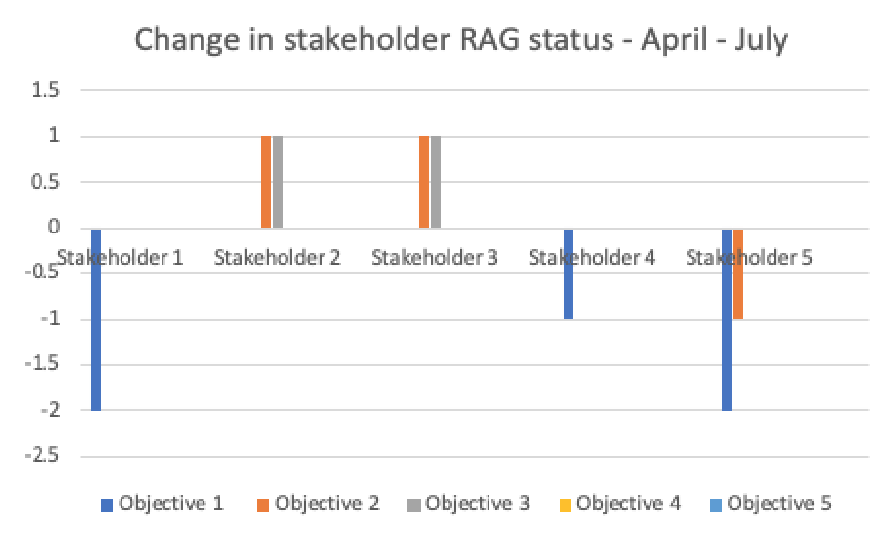eLearning Log in
Login here using your username and password
How do I manage project stakeholders?
Introduction
Reviews by the UK National Audit Office have shown that stakeholder perception of a project is often totally unrelated to the traditional performance measures of time, cost and quality.
The key to successful management of stakeholders is setting realistic expectations and then maintaining engagement through regular communications that reinforce expectations at the appropriate level.
There is a tendency to communicate with stakeholders at the start of the project when the requirements are being identified, lose contact during planning and delivery, and re-engage near to transition time. However, and disappointingly for the project, by this time the stakeholders may have lost interest. Therefore, ideally, stakeholders should be involved during the design and development of the plan, but even if this hasn’t happened they certainly need to be engaged during the delivery of the plan.
As we noted above, a key aspect of stakeholder management is expectation setting. One of the problems with delivering any sort of change is that it may be good for the organization but it is quite often bad for individuals.
It is therefore essential that the project communicates effectively and ensures that there is a realism about the impact on the operations and the individuals when the project delivers. This is particularly important when planning for transition.
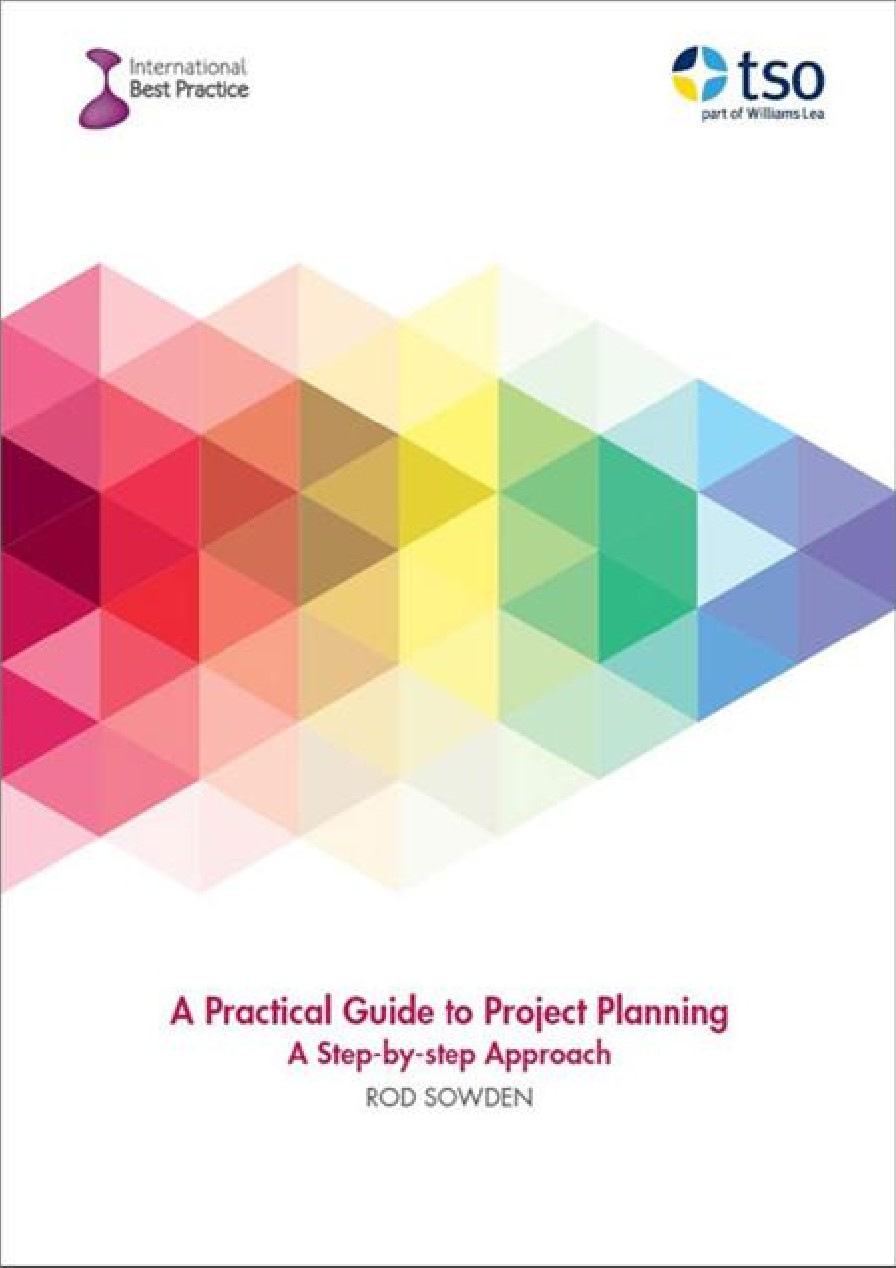
This extract has been reproduced with permission from A Practical Guide to Project Planning, TSO 2016. If you’d like to read more you can purchase the copy of the book here.
Transition is often painful for the operational people who have to deal with the new ways of working especially if they are not adequately supported during this period. As the resistance to the change increases, the chances of success are reduced and the image of the project is tarnished, however well it is delivered.
Tip
A study at the Vehicle and Operator Services Agency (VOSA) in 2007 showed that for every project person accounted for in business cases, three operational people were being used and were unaccounted for. This illustrates why it is essential to fully understand the impact of changes and how resources are being consumed and accounted for.
A particular issue about which the project must be sensitive is the amount of resources that are expected from stakeholders. Stakeholders may resist a project because of the resources they are expected to provide rather than simply being against the concept of the project.
With huge pressure being placed on front-line services there will often be very little flexibility in the resources that they can take from delivering services to support the project. As part of estimating you may have provided backfill, but having more bodies can often reduce efficiency. It is also likely that the project will want access to the best operational people who have the knowledge and skills to support the change, but these are exactly the people the operations will not want to lose.
Technique
At the outset of the project during the Defining the Plan stage (see section 2.2 and Table 2.3), stakeholder analysis should have been undertaken to underpin communications planning. This early analysis should show where the levels of support are and the levels of engagement. However, during the following stages of the plan more information and understanding will have been developed and the stakeholder perception may have changed.
These changes of perceptions and views will need to be tracked, as the aggregating support or resistance from stakeholders will increase or decrease the risk to the project.
You can gather intelligence on stakeholder perceptions by:
- Monitoring responses and feedback to communications – positive, negative or none
- Noting views expressed at meetings or in one-to-one conversations
- Noting views expressed through other media
- Recording attendance/availability for meetings
- Conducting surveys
- Hosting consultation workshops/events.
Example
Stakeholder support should be captured regularly and be part of the project reporting process, as movements in support may well be an early indicator of problems ahead.
During delivery, the analysis is even more important, and the project should be looking to leverage opportunities to win support from stakeholders who are resistant. This can be achieved through using quick wins or carefully targeting stakeholders to be involved in the pilots or testing to help them increase their involvement.
Table 5.4 is a simple table (similar to Table 2.3) which maps stakeholders’ support against the project objectives for a certain month (say April) of a project. At this time Objective 1 has full support but the support is not quite so good for other aspects of the project, which may be more or less critical.
Table 5.4 Stakeholder support mapped to project objectives (April)
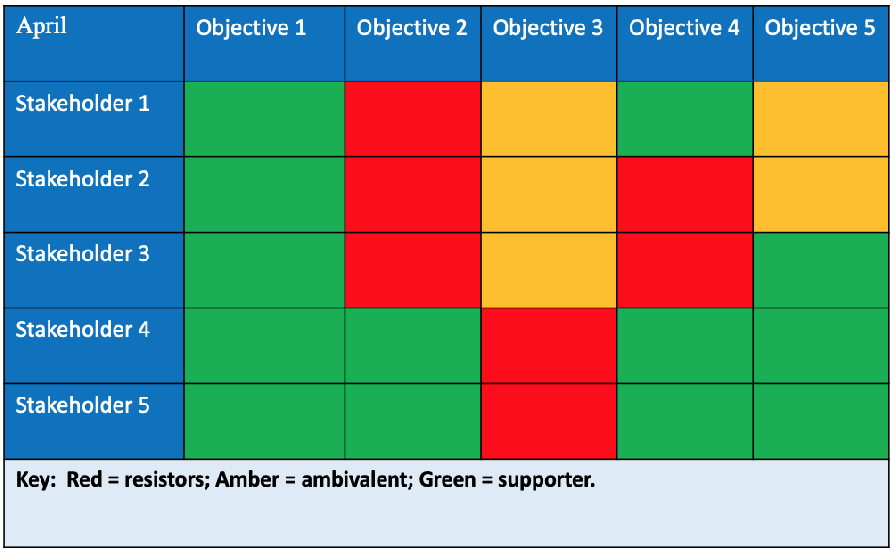
Table 5.5 Stakeholder support mapped to project objectives (July)
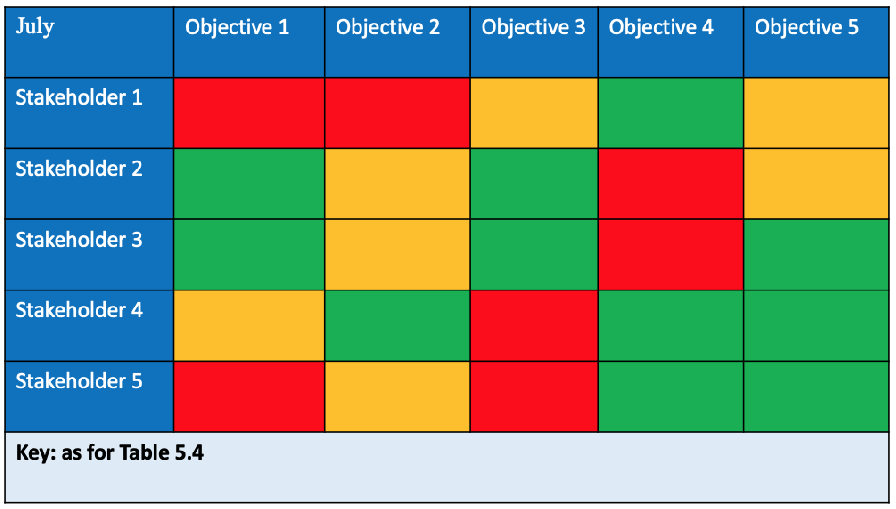
Table 5.5 shows the support 3 months later (July in this example). The level of support for Objective 1 has weakened, support for Objective 3 has strengthened and Stakeholder 1 is looking very unhappy. This information would now feed into the communications plan for the next 3 months. Priorities might include communications with Stakeholder 1 to try to reduce their opposition and attempts to communicate more clearly about certain objectives (e.g. Objective 1).
Support change analysis
Adding numbers to the status map allows for a comparison of stakeholder to be drawn between the two months (Table 5.6). This can also be displayed in a graph to show whether support has changed for each objective or whether one stakeholder has changed opinion for a number of objectives (Figure 5.3).
Table 5.6 Change in stakeholder support from April to July
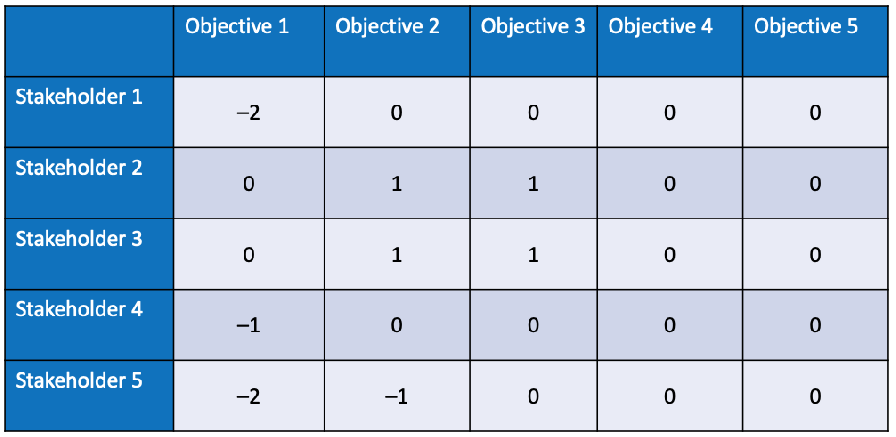
Figure 5.3 Graph of change in stakeholder support from April to July
